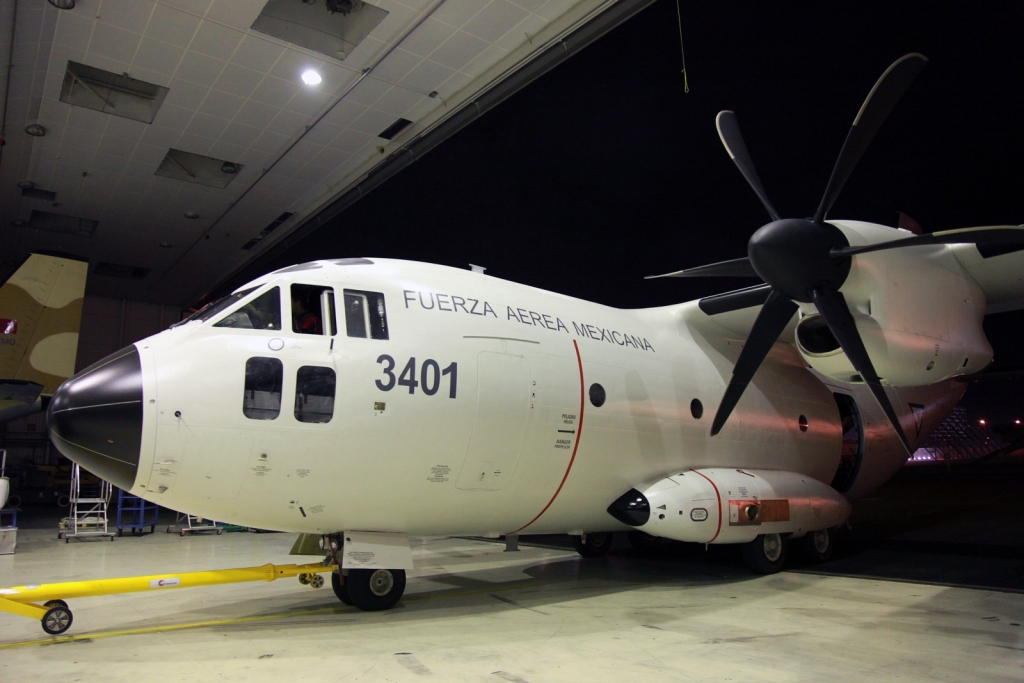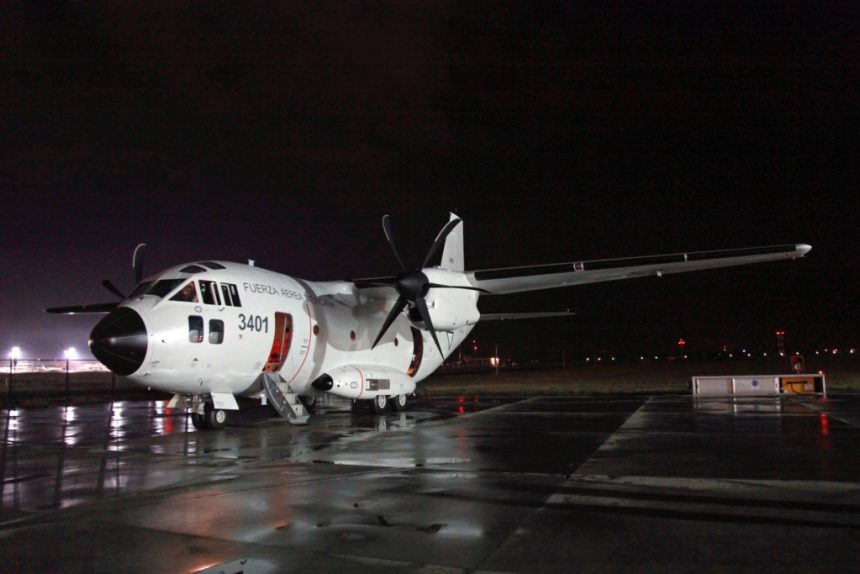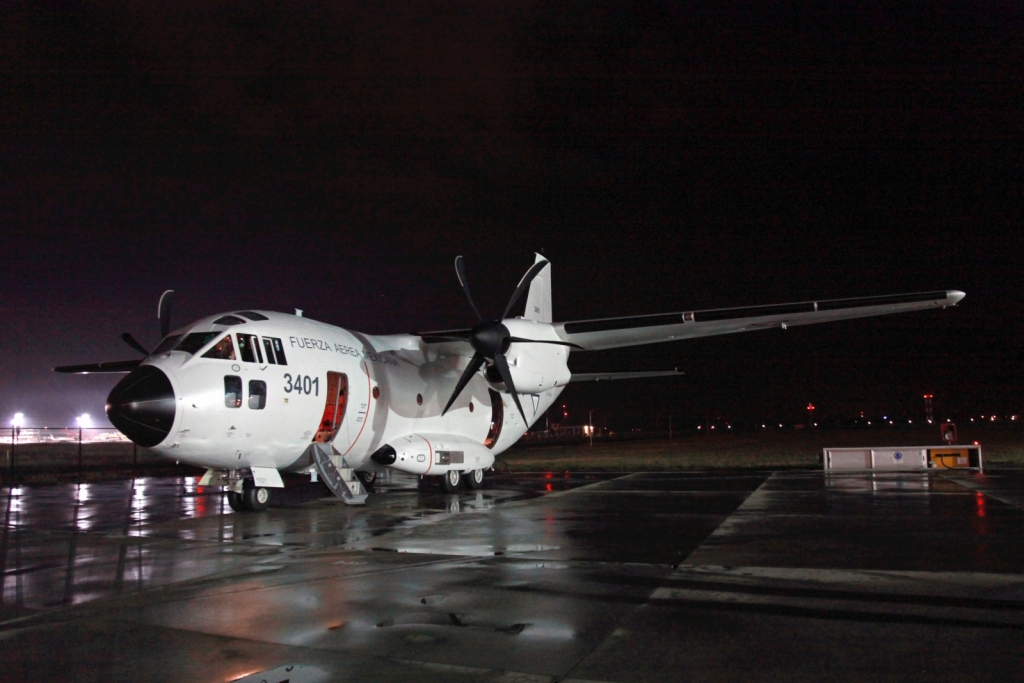The first C-27J wearing the Mexican colours has performed a series of flights over Mexico City during the traditional parade that celebrate the Mexican Independence’s anniversary.
Along with Alenia Aeronautica’s Spartan, the first of four Mexican C-27Js, selected on Jul. 6, 2011, has performed several flypasts in formation with many other aircraft of the Mexican Air Force fleet.
Coded 3401, the new aircraft will be used to troops, goods and medicines transportation, logistical re-supply, MEDEVAC (Medical Evacuation), airdrop operations, paratroopers’ launches, search and rescue (SAR), fire fighting, humanitarian assistance, release of liquids dispersing hydrocarbons in the sea in the event of accidents on oil platforms, and homeland security support missions.
The C-27J is an extremely maneuverable aircraft capable of taking off from and landing on unprepared strips, less-than-500 m. long, with maximum take-off weight of 30,500 kg; it may carry up to 60 equipped soldiers or up to 46 paratroopers and, in the air ambulance version, 36 stretchers and 6 medical assistants. The large cross section (2,60 meters high, 3,33 metres wide) and high floor strength (4,900 kg/m load capability) allow heavy and large complete military equipment to be loaded. The C-27J can, for example, transport Hummer, engines of fighter and transport aircraft, such as C-130, Eurofighter Typhoon, F-16 and Mirage 2000, directly on their normal engine dollies without further special equipment.
Noteworthy, the C-27J is particularly suited for Special Operations. As I’ve already written on this weblog, at the end of June Alenia Aeronautica, announced that it is evaluating the feasibility of an aircraft for the Italian Air Force to support National Special Forces Operations. Withing the so-called Pretorian Programme, technical solutions for providing weapons and integrated weapon systems, Communications Intelligence (COMINT), EO/IR Sensor (Electro optical/Infra-red) to the C-27J are under evaluation.
The ItAF has a C-27J equipped with LIDAR (Light Detection And Ranging), a special equipement for the detection and measurement of airborne particles, and it could use the same aircraft for the BONAS (BOmb factory detection by Networks of Advanced Sensors) cooperative project whose aim is to build up a sensor network that will help to geo-locate the vicinity of a “bomb factory” by detecting traces of chemicals used in IED production.











